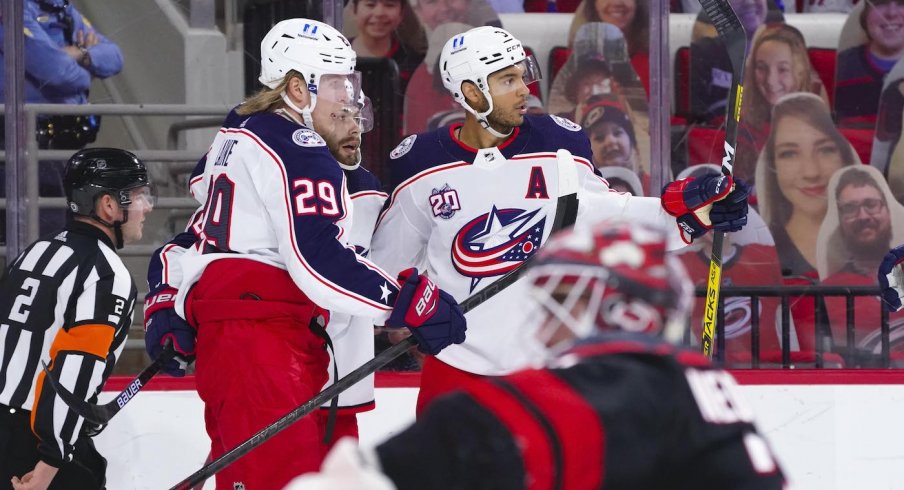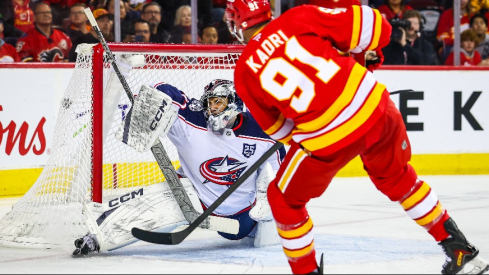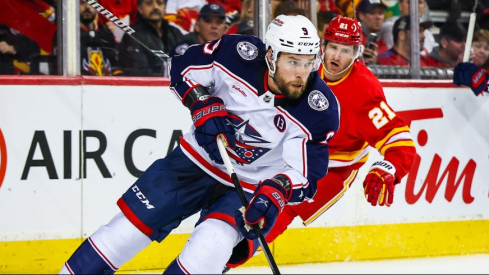The Columbus Blue Jackets' offensive woes have been well-documented this season, but are there parts of the goal-scoring process that are actually “OK,” and others that are struggling?
Let’s take a look at all the behaviors that should help a team score a goal.
Getting into the Offensive Zone
Corey Sznajder remains our go-to resource for publicly-available transition data, and he released his first chunk of tracked games earlier this month. Here’s how the Blue Jackets stack up against the league when it comes to getting the puck in the zone.
In the chart below, the x-axis tracks the percentage of zone entries that are controlled or “carried in” by a team. The farther to the right, the better. The y-axis shows what percentage of those carries result in a scoring chance – the higher up a team is, the better.
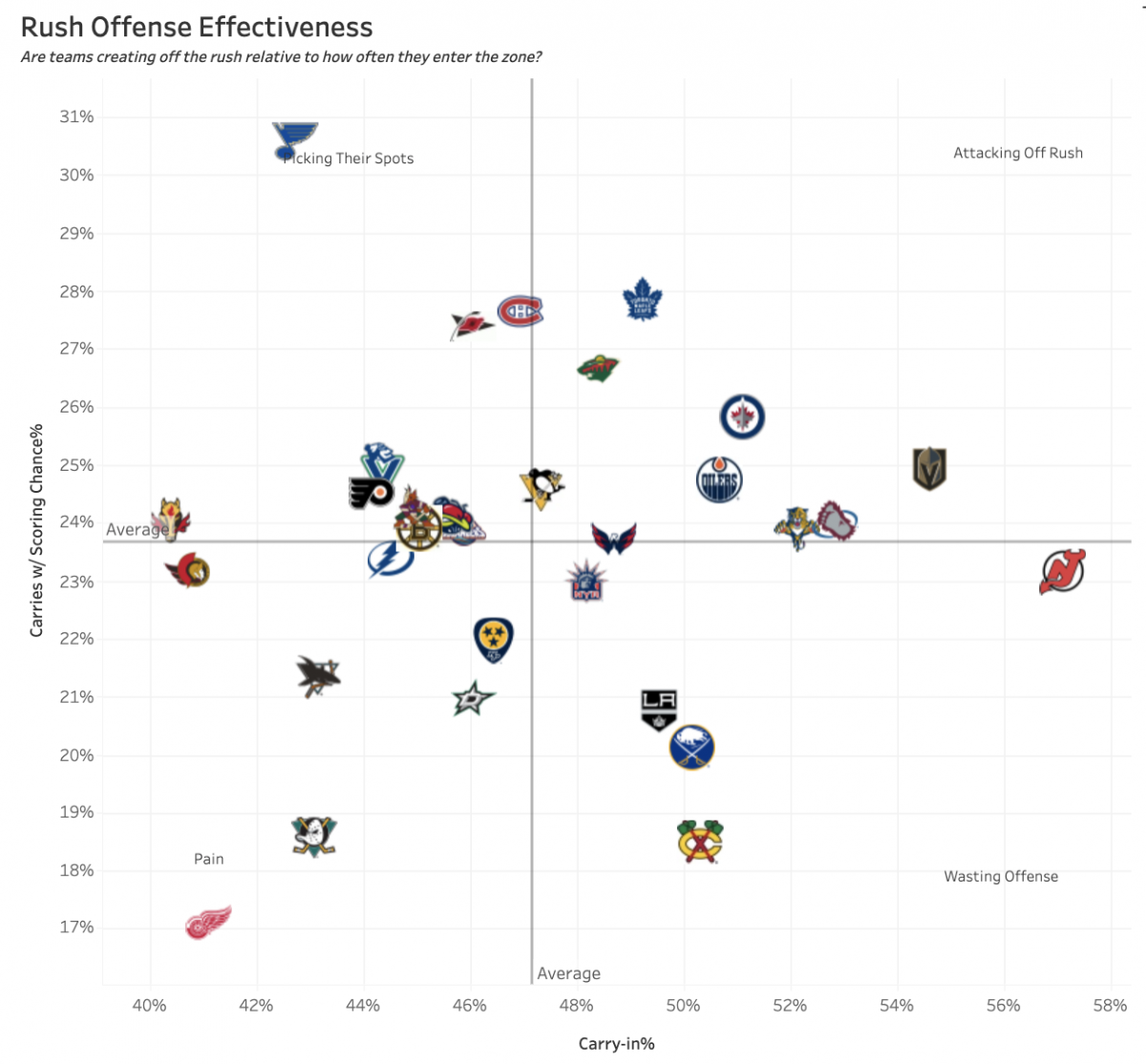
Unfortunately, Columbus is below average in getting the puck in with control.
That shouldn’t be a huge surprise given the team’s use of the dump and chase approach, but when you couple that with their hanging around an average rate of generating chances, that doesn’t result in a high-event or high-quality offense.
Speaking of that…
Shooooooot…and shoot well!
Columbus just isn’t taking a lot of shots, and the shots they are taking aren’t always grade-A chances.
In 5-on-5 play, according to Evolving-Hockey.com, the Blue Jackets rank 28th in the League in unblocked shots per 60 minutes of play (36.66). When the team does fire off a puck, the quality isn’t there. Columbus currently ranks last in overall shot quality with just 1.83 expected goals per 60 minutes of play. That’s a drop from last year’s 2.22 expected goals per 60 rate and a far cry from the Avalanche’s league-leading 2.61.
The viz below shows us where the Blue Jackets' shots are coming from. Red marks areas where shots occur at a rate higher than league average, and blue marks where shots occur at a rate lower than league average.
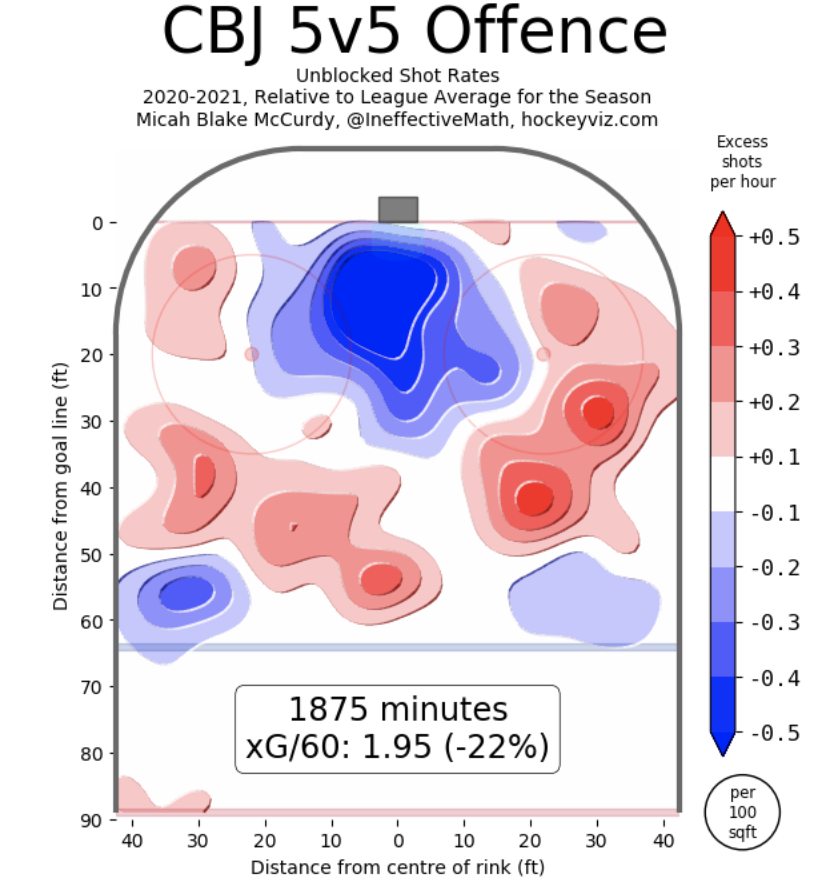
The Blue Jackets just aren’t challenging netminders in close or from the slot.
Part of that might be related to the team’s inability to generate high-danger passes. Again, using data from Sznajder, we see the vast majority of Blue Jackets players are below average at generating high-danger passes (Kevin Stenlund leads the pack), and only Cam Atkinson and Mikhail Grigorenko have been able to turn the high-danger feeds they get into actual shots.
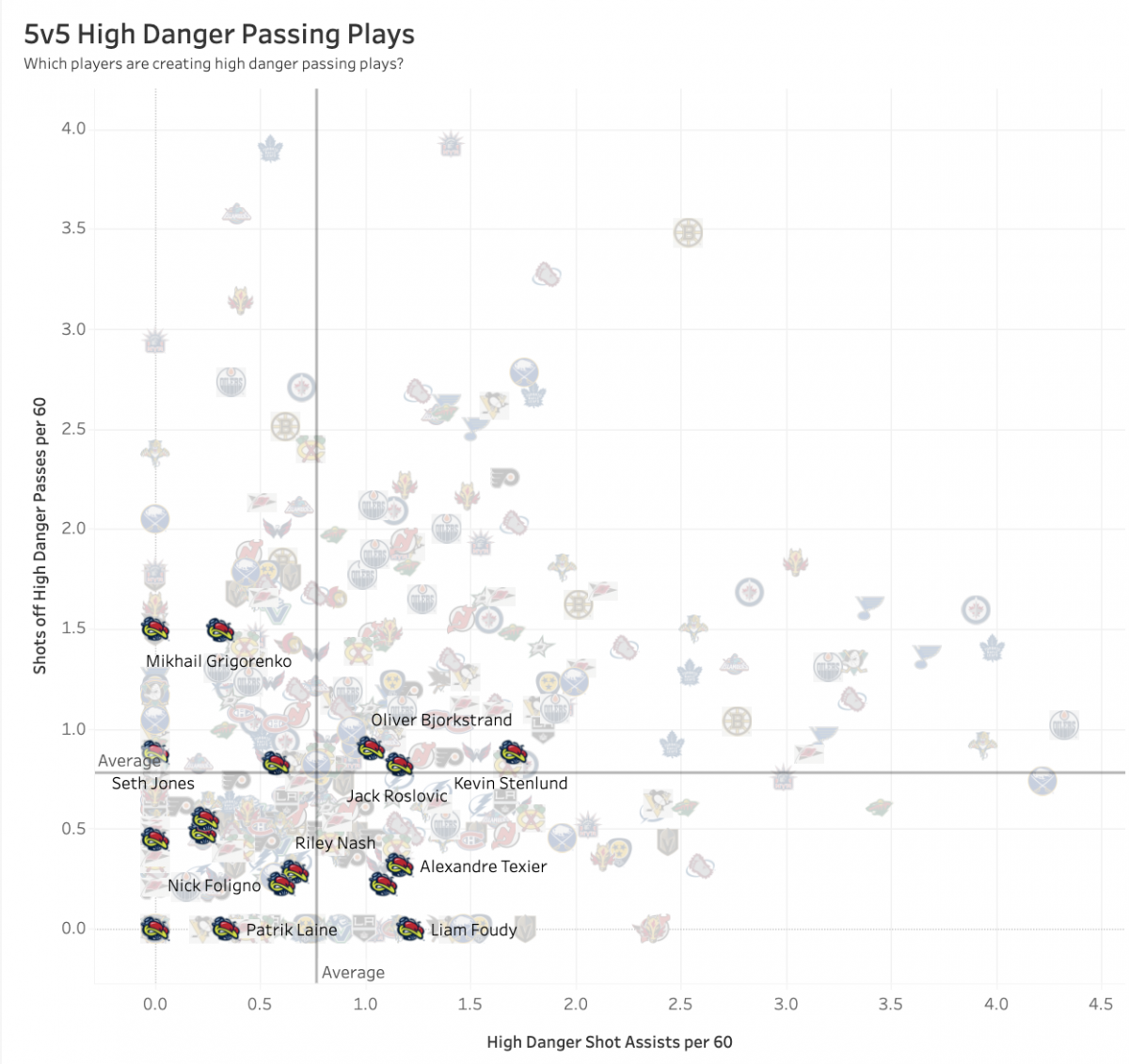
The finish
Here’s some interestingly good news for the Blue Jackets. We just pointed out that Columbus' ability to generate offensive volume and quality seem to be in decline, but is improving its ability to make chances count.
The chart below depicts Hockey Viz’s “finishing” metric. Again, red marks a performance above league average, while blue marks below average. The purple bar at the bottom shows the team’s total shot quality and the red bar shows the team’s actual goals produced.
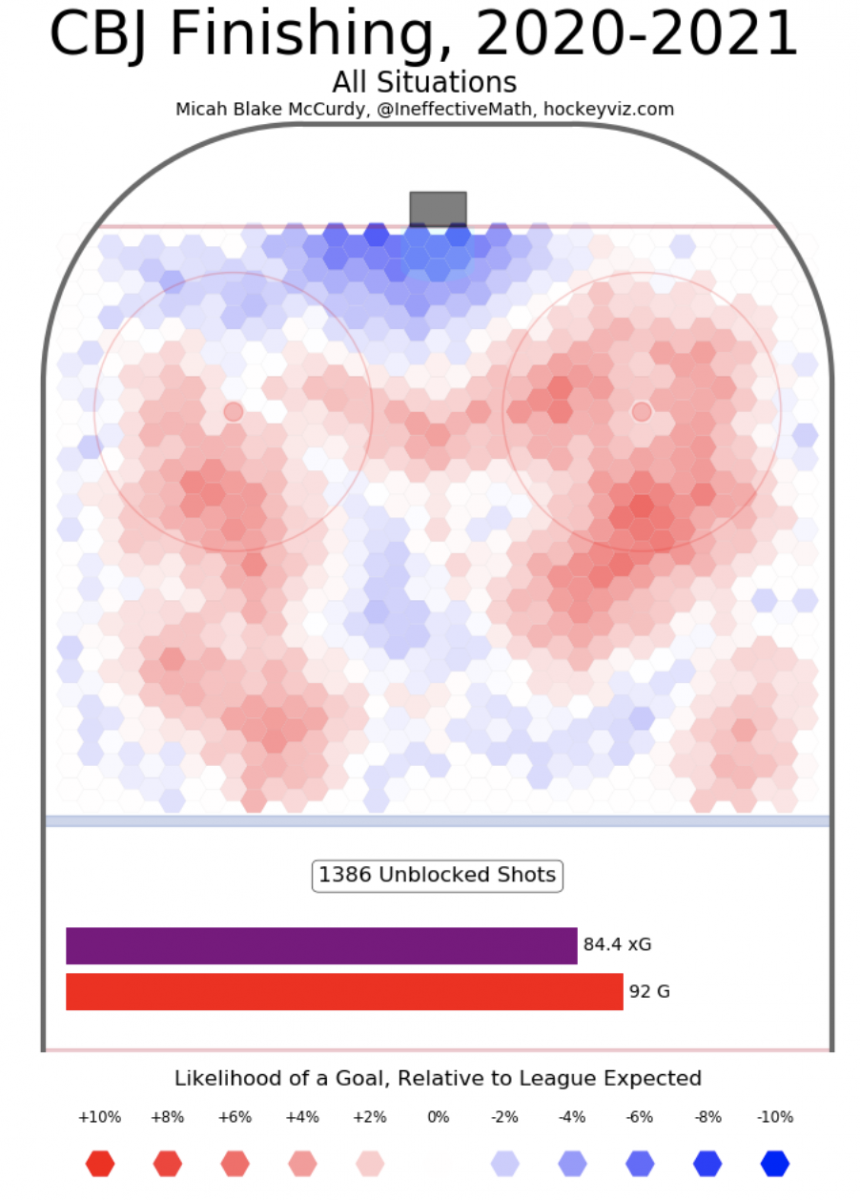
The bars show us that Columbus is outperforming what its shots are generating. And, while it’s not “blow the doors off" offense, the team is over-performing in areas where it takes the majority of shots.
Worth mentioning: this finishing performance is an improvement over last season (something that surely could be related to the vast number of injuries that plagued the roster in 2019-20).
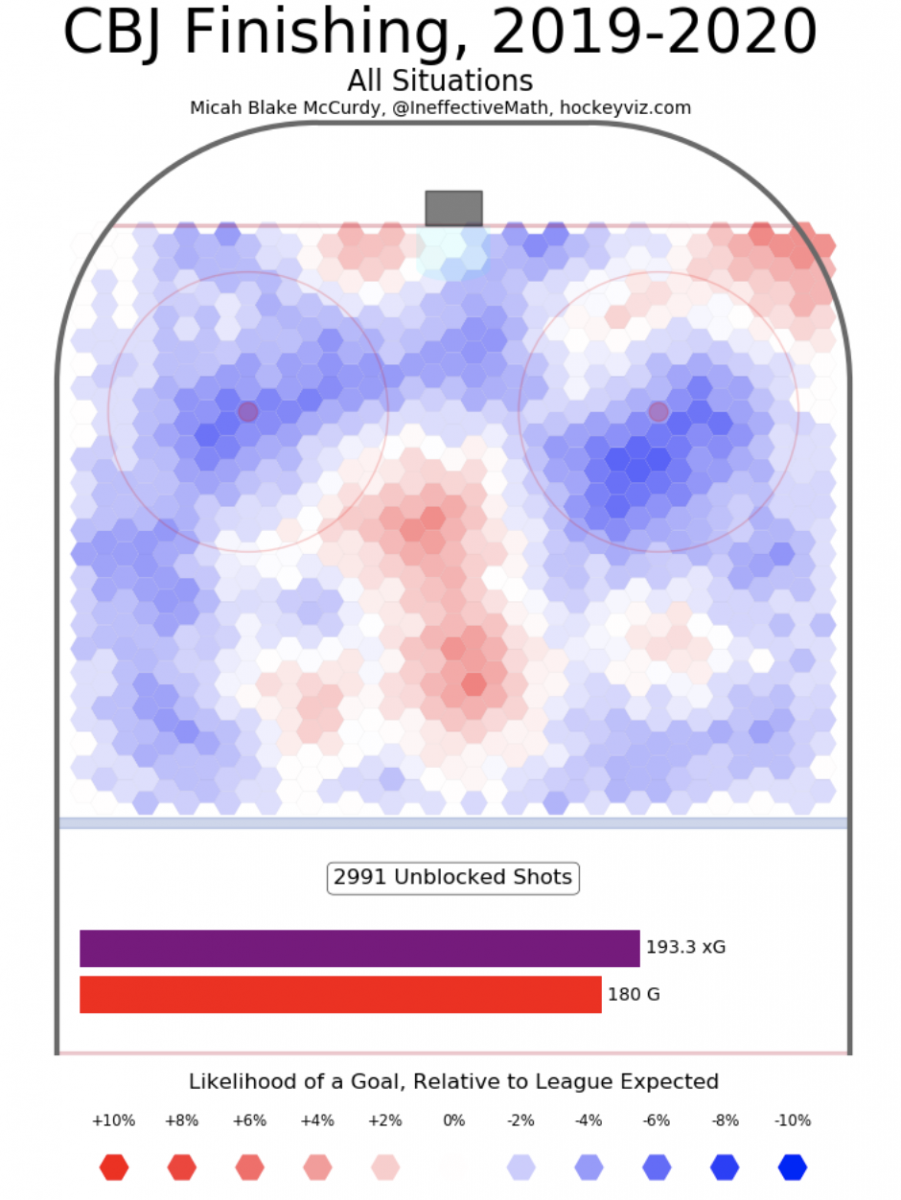
But, let’s keep things in perspective: there's still work to do. Here’s what Tampa Bay’s finishing ability looks like.
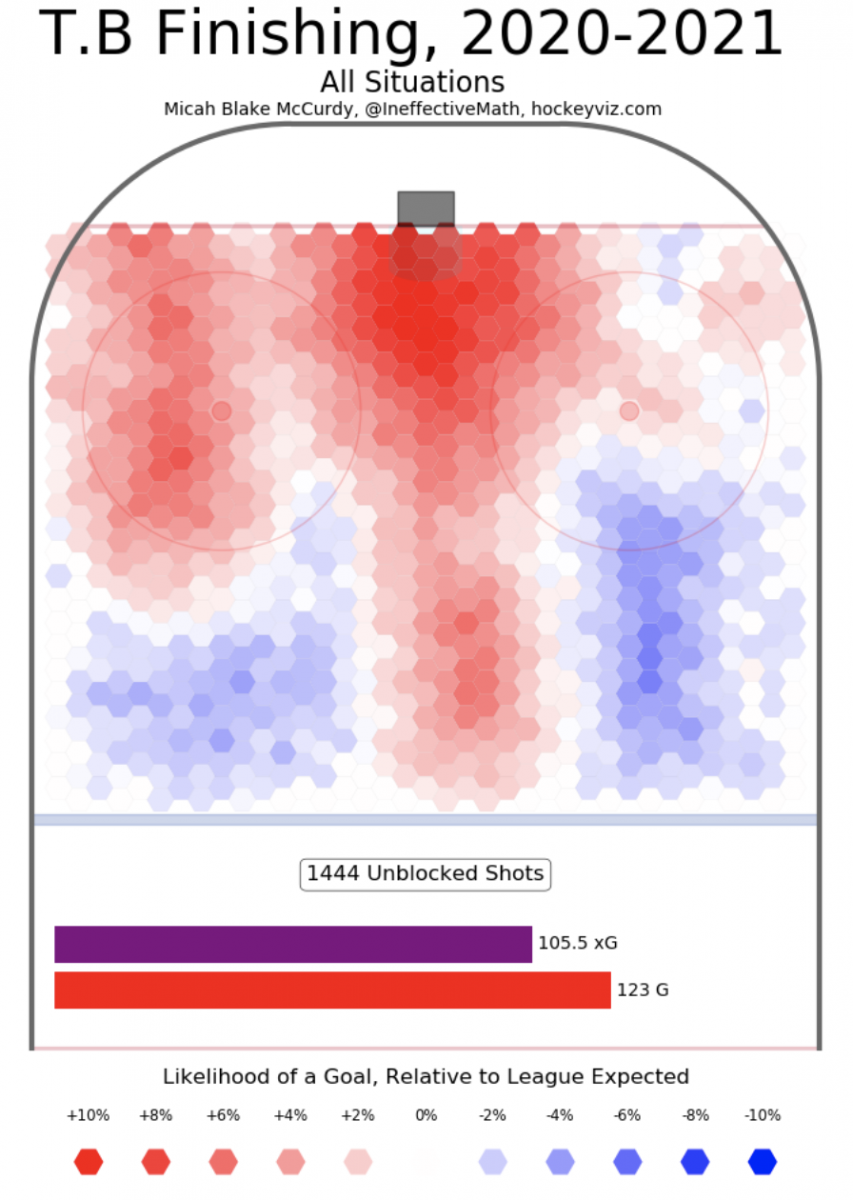
Overall, the numbers tell us what our eyes see: the Blue Jackets need more (and better) scoring chances. But a slight revelation exists in the fact that this team can convert the chances it gets. All the more reason to believe that if this group could figure out a way to generate more opportunity, finding the back of the net may not be as hard as it's seemed.
